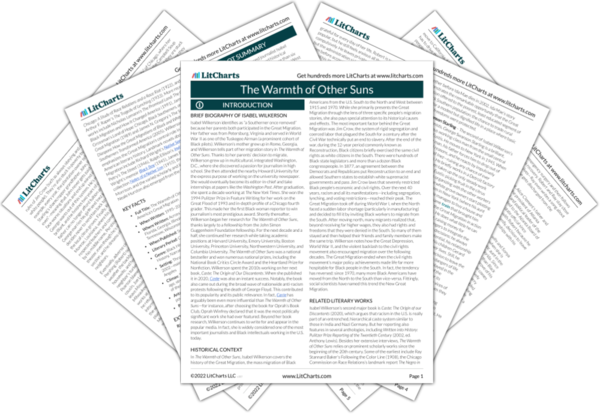Previous
Part Four: Divisions
|
Previous
Part Four: Divisions
|
The Warmth of Other Suns: Part Four: To Bend in Strange Winds Summary & Analysis |
Next
Part Four: The Other Side of Jordan
|


Upgrade to unlock the analysis and theme tracking for all of The Warmth of Other SunsThe Warmth of Other Suns!
Get LitCharts A+